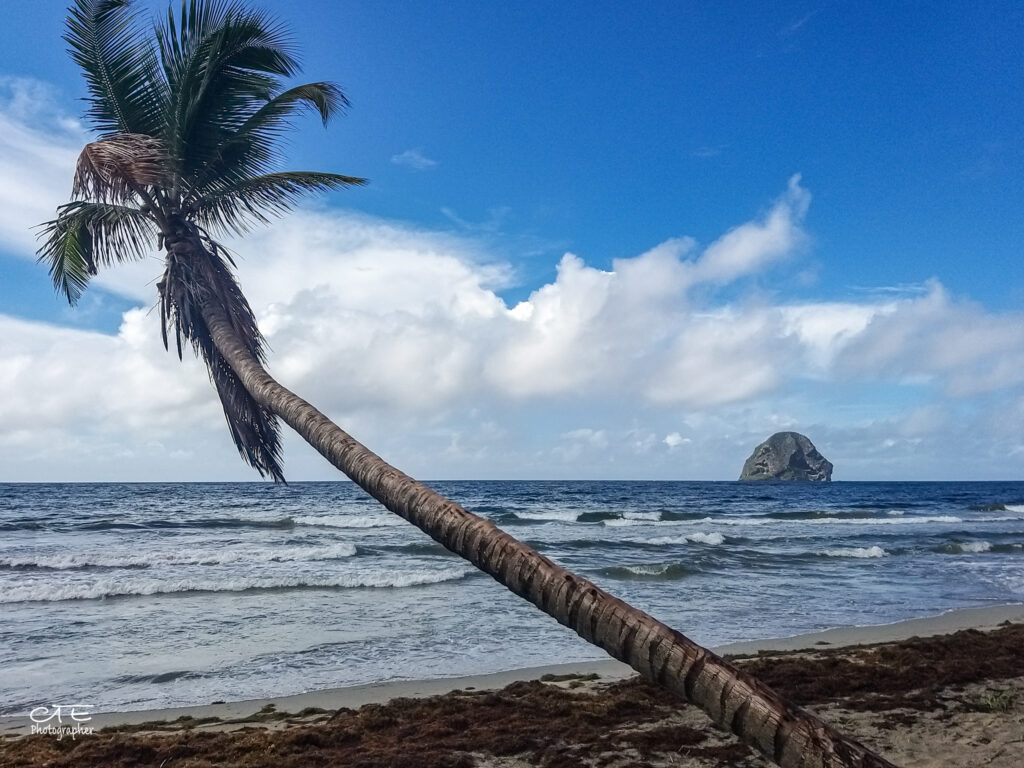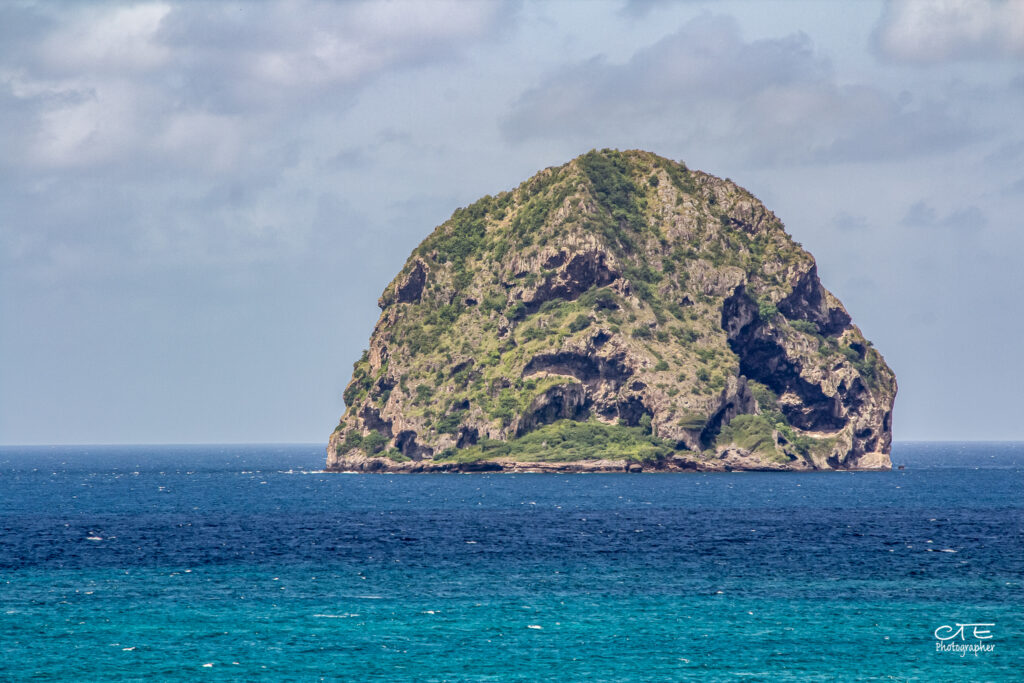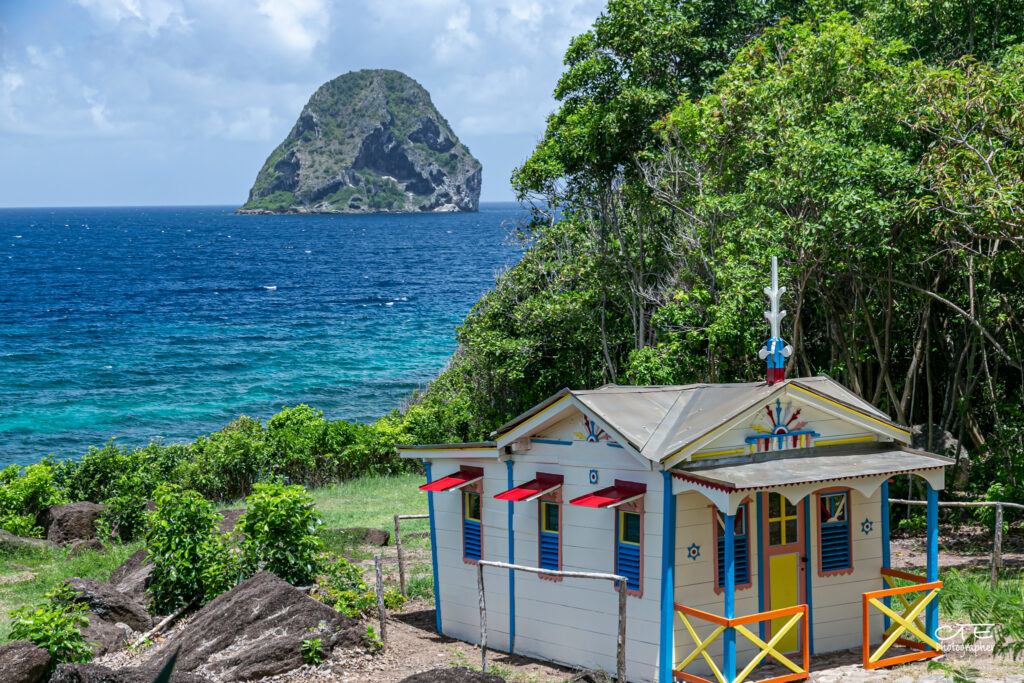
Diamond Rock (Rocher du Diamant)
Description
The famous Rocher located in the commune of Le Diamant is a hotspot for biodiversity. Due to its richness, it is part of the coastal conservation area and has also been classified since 1994 as a biotope protection zone, which prohibits access.
The Rocher du Diamant gave its name to the commune and faces Morne Larcher (478 m). Of volcanic origin and located 1,800 m from the coast, it rises to a height of 176 m.

Visible from afar, it stands out as a landmark in the south of the island and magnifies the vast expanse of water that is the Atlantic Ocean. This enormous rock, as if resting on the water, is subject to powerful swells generally coming from the Saint Lucia Channel, but its rocky cliffs, firmly anchored, make it appear imposing and tenacious.
Biodiversity
The biodiversity of the Rock is abundant on its slopes and in the surrounding seabed.
It is an important nesting site and the birdlife is exceptional. It is home to no fewer than 13 species of birds and is a refuge for the main protected species in Martinique: the brown noddy, the magnificent frigatebird, the great pied kingfisher, the bridled tern and the brown booby. The marine area of the site includes shoals submerged under about ten metres of water. Le Rocher is one of the most famous diving sites in Martinique. There are different populations of flora and fauna depending on the depth, relief and sea currents.
Isolated from the coast, the coral populations are abundant and relatively well preserved. More than fifteen species of scleractinian and hydrocorallian corals, a dozen species of gorgonians, a dozen species of sponges and around fifty species of fish have been recorded. Semi-pelagic species can also be seen here.
The macroalgae population is dominated by Sargassum on the moderate slopes. However, there is a high level of species diversity, particularly on the shallow plateau to the north-east of the rock.
The southern plateau, with its coral cover, is home to hawksbill turtles.
Ecotourism potentiel
In order to promote the biodiversity of the Rock and protect it from trampling and overuse, the coastal conservation authority and the city have set up a live video transmission system: http://www.rocherdudiamant.com

And, although the Rock is not accessible by land, the sea offers exceptional scuba diving. However, choose alternatives such as sailing boats or catamarans to enjoy it without causing too much hydrocarbon pollution.
Here is a website that provides a detailed presentation of the history, geology and biodiversity of the Rock: https://www.rocherdudiamant.fr
Informations
-
Types de milieux
Récif corallien -
Location
Martinique (Le Diamant)
